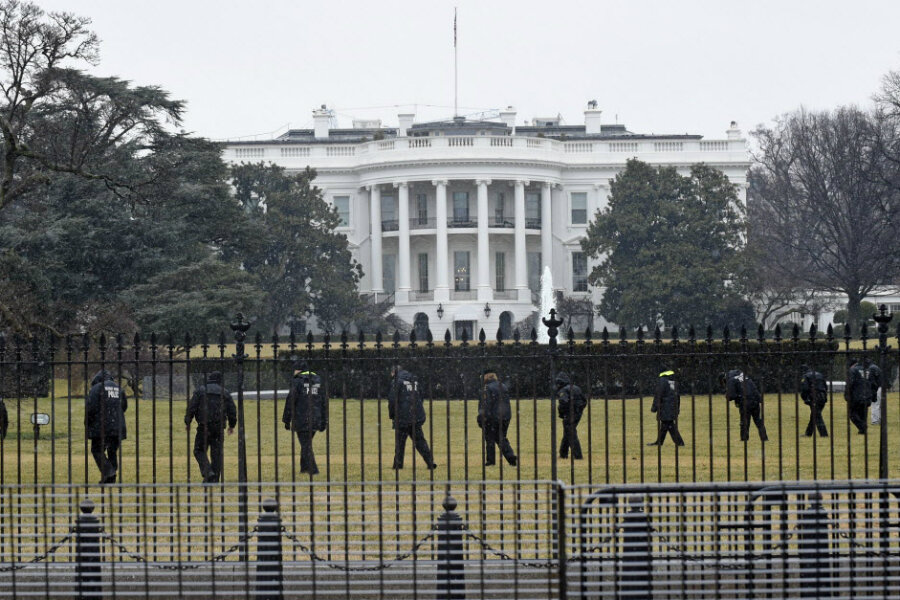Recreational drone crash: New vulnerability for White House?
Loading...
| WASHINGTON
[Updated 5 p.m.] Secret Service agents found the wreckage of a small drone on the grounds of the White House in the early hours of Monday. The quadcopter, a widely-available four-propeller drone used by hobbyists and photographers, was being flown for “recreational use,” according to a statement by Secret Service spokesman Brian Leary.
The drone’s pilot called the Secret Service on Monday and turned himself in after seeing news reports describing the crashed aircraft. The agency will continue its probe of the incident with “corroborative interviews, forensic examinations, and reviews of all other investigative leads,” Mr. Leary said.
The Secret Service response to the incident was visible from outside the executive mansion fence. Emergency vehicles swarmed the White House prior to sunrise. After there was enough daylight, agents methodically searched the grounds, according to the Associated Press. They looked closely at the grass and used flashlights to illuminate the dense bushes up near the base of the White House itself.
The president and first lady Michelle Obama were in no danger from the drone as they were a world away in South Asia. It’s possible first daughters Sasha and Malia were at 1600 Pennsylvania Avenue, however. Spokesman Earnest would not say whether they were staying at home with their grandmother.
Like the spate of fence jumpers that troubled the White House this fall, the drone intrusion is an indication of security vulnerability. There was no danger this time but the fast development of small commercial drones poses a challenge to a troubled Secret Service. They’re small, they’re quick, and they’re hard to detect. Yet they’re capable enough to carry something lethal.
The White House almost certainly has some sort of point air defense. Small aircraft and helicopters have veered too close to the building in the past. In 1994, a stolen Cessna 150 airplane crashed on the White House grounds, killing its mentally troubled pilot.
Agents probably have a version of a hand-held, surface-to-air missile. It’s thought there is at least one longer-range defensive missile emplacement on a higher building outside the White House perimeter.
Small drones would require a different kind of defense, of course. Perhaps electronic jamming would work, or shotguns. If the Secret Service did not previously have a plan to defeat such a tiny intruder, it now has received a wakeup call indicating that it needs one.
Author Ron Kessler writes in Time Magazine that the drone threat is one the Secret Service has indeed made a start at addressing. Officials have contacted the US national laboratories in search of a solution. One idea: counter-measures that would zap drone innards with electromagnetic waves.





